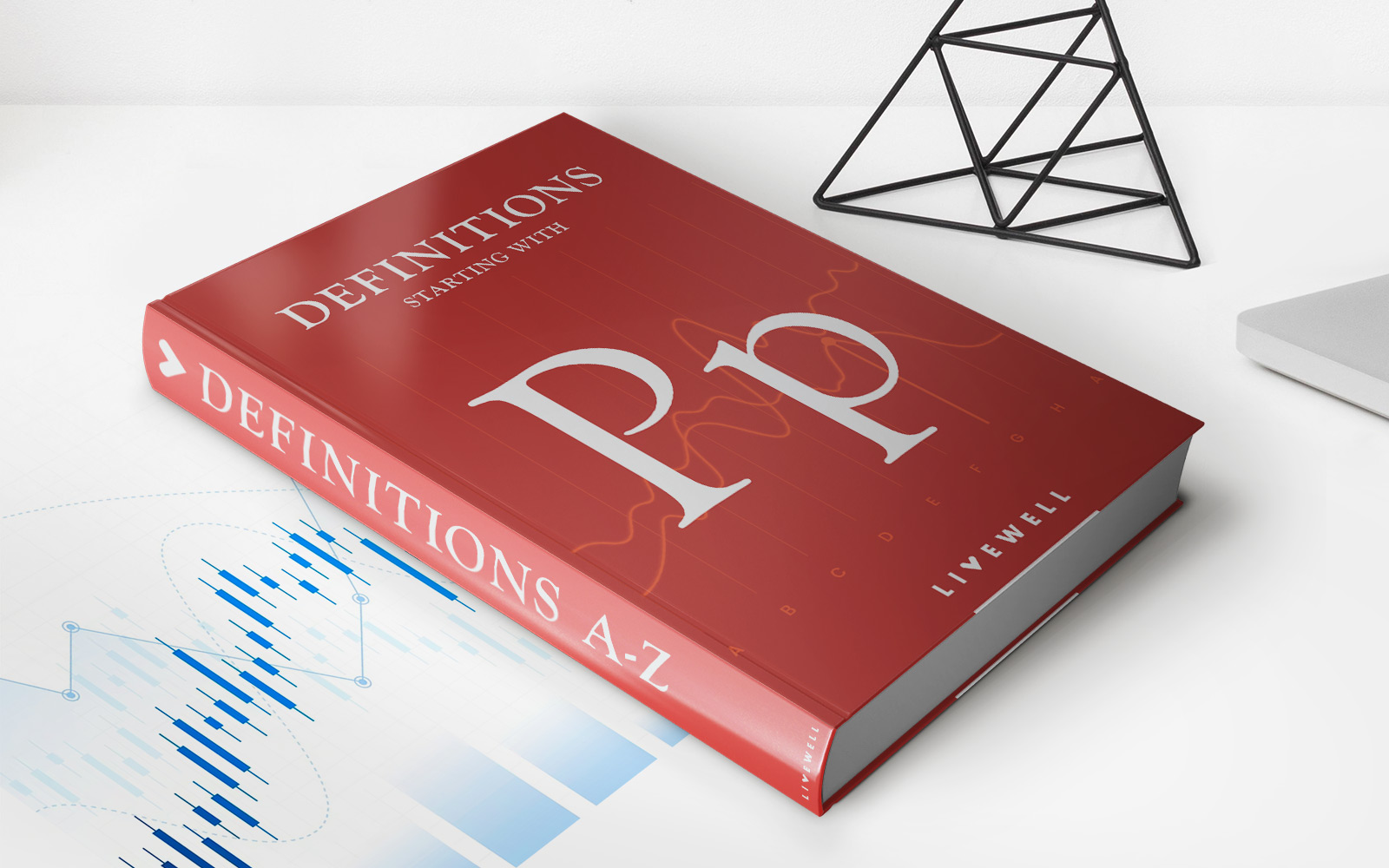Home>Finance>How To Get Homeowners Insurance After Being Dropped


Finance
How To Get Homeowners Insurance After Being Dropped
Published: November 17, 2023
Learn how to secure homeowners insurance even after being dropped. Our expert finance tips will help you find the best coverage for your home.
(Many of the links in this article redirect to a specific reviewed product. Your purchase of these products through affiliate links helps to generate commission for LiveWell, at no extra cost. Learn more)
Table of Contents
- Introduction
- Understanding Why Homeowners Insurance Policies Get Dropped
- Assessing the Reason for Policy Cancellation
- Steps to Take Immediately After Being Dropped by an Insurance Company
- Reviewing Your Coverage Needs
- Researching and Comparing Different Insurance Companies
- Gathering Required Documentation for New Insurance Applications
- Filling Out the Application Correctly
- Providing Additional Information or Documentation if Requested
- Handling the Claims History and House Inspection Process
- Negotiating the Insurance Premium and Coverage Options
- Finalizing the Policy Agreement
- Conclusion
Introduction
Getting homeowners insurance is an essential step in protecting your most valuable asset – your home. It provides peace of mind by safeguarding against potential damages, liabilities, and losses. However, if you’ve recently been dropped by your insurance company, you may be wondering how to secure a new policy.
Being dropped by an insurance company can happen for various reasons, such as a high claims history, failure to make premium payments, or changes in the underwriting guidelines of the company. When this occurs, it’s important not to panic. There are steps you can take to get homeowners insurance even after being dropped.
In this article, we will guide you through the process of obtaining homeowners insurance after being dropped by an insurance company. We will discuss the reasons for policy cancellation, the steps to take immediately after being dropped, as well as how to research and compare different insurance companies. By following these steps, you’ll be well on your way to securing a new homeowners insurance policy that meets your needs.
Understanding Why Homeowners Insurance Policies Get Dropped
There are several reasons why homeowners insurance policies may get dropped by insurance companies. Understanding these reasons can give you insights into why your policy was canceled and what steps you can take moving forward.
One common reason for policy cancellation is a high number of claims. Insurance companies operate on the principle of risk assessment – the higher the number of claims, the higher the risk they perceive in insuring your property. If you’ve made numerous claims in a short period, it raises concerns for the insurer and they may decide to drop your policy.
Another factor that can lead to policy cancellation is failure to make premium payments. Homeowners insurance requires regular premium payments to keep the policy active. If you fall behind on payments and fail to bring the account up to date, the insurer may drop your policy.
Changes in the underwriting guidelines of the insurance company can also contribute to policy cancellations. Insurance companies periodically review their underwriting policies and guidelines. If your property no longer meets their criteria or if they have made changes to their risk assessment process, they may decide to cancel your policy.
It’s important to note that policy cancellations can also occur due to external factors that are beyond your control. For example, if your home is located in an area prone to natural disasters or if there have been significant changes in local building codes that affect the insurability of your property, the insurance company may choose to drop your policy.
By understanding the reasons why homeowners insurance policies get dropped, you can evaluate your situation and take appropriate steps to address the issue. Whether it involves mitigating risk factors, improving your claims history, or finding a new insurance provider, being aware of these reasons puts you in a better position to navigate the process of getting new homeowners insurance.
Assessing the Reason for Policy Cancellation
Once you’ve been dropped by your insurance company, it’s important to assess the specific reason for the policy cancellation. Understanding why your policy was canceled can help you address any underlying issues and prevent a similar situation in the future.
Start by reviewing any correspondence you received from your insurance company regarding the policy cancellation. Look for details or explanations provided by the insurer. This information can provide valuable insights into their decision.
If you’re unsure about the reason for the cancellation or if the explanation provided is unclear, don’t hesitate to contact the insurance company directly. Speak with a representative or agent who can clarify the circumstances surrounding the cancellation.
If the cancellation was due to a high number of claims, take the time to evaluate your claims history. Determine if there were any preventable incidents or if the claims were legitimate. Identifying any patterns or areas for improvement can help you make adjustments moving forward.
If the cancellation resulted from missed premium payments, review your financial situation to understand why the payments were not made. Assess your budget and determine if there are any areas where you can make adjustments to ensure future premium payments are not missed.
In cases where changes in underwriting guidelines were cited as the reason for cancellation, look into the specifics of the new guidelines. Assess if there are any changes you can make to your property to meet the updated requirements. Alternatively, you may need to seek coverage from a different insurance company that has more lenient guidelines or a better fit for your property.
By thoroughly assessing the reason for policy cancellation, you can gain a better understanding of the situation and make informed decisions moving forward. Whether it involves adjusting your claims history, improving payment habits, or finding a more suitable insurance provider, addressing the root cause of the policy cancellation will increase your chances of securing new homeowners insurance.
Steps to Take Immediately After Being Dropped by an Insurance Company
Discovering that you’ve been dropped by your insurance company can be a stressful situation. However, it’s important to take immediate action to ensure the protection of your home and belongings. Here are the steps to take right after being dropped by an insurance company:
- Contact your insurance company: Reach out to your insurance company to confirm the cancellation and understand the reasons behind it. Ask for any necessary documentation, such as a cancellation notice, which may be required when applying for new insurance.
- Assess your coverage needs: Evaluate your current coverage needs and assess any potential gaps in protection. Consider factors such as the replacement cost of your home, the value of your belongings, and any additional coverage you may require, such as flood insurance.
- Research and compare different insurance companies: Start researching and comparing insurance companies that specialize in homeowners insurance. Look for reputable companies with positive customer reviews and competitive rates. Take note of their coverage options and any specific requirements they may have based on your circumstances.
- Gather required documentation: Collect the necessary documentation needed for new insurance applications. This may include information about your property, such as its age, size, and construction materials, as well as details about your claims history, credit score, and any relevant personal information.
- Fill out the application correctly: Pay close attention to the details when completing your insurance application. Provide accurate and detailed information about your property and personal circumstances. Any discrepancies or inaccuracies could potentially lead to a delay or rejection of your application.
- Provide additional information if requested: Be prepared to provide additional information or documentation if requested by the insurance company. This may include a home inspection report, proof of security measures, or any other relevant details that can help facilitate the underwriting process.
- Negotiate the insurance premium and coverage options: Once you receive quotes from different insurance companies, consider negotiating the premium and coverage options. If the initial quote is high, inquire about any possible discounts or adjustments that can help make the policy more affordable while still meeting your coverage needs.
- Finalize the policy agreement: Review the terms and conditions of the new policy carefully before finalizing the agreement. Understand the coverage limits, deductibles, exclusions, and any other important details. Ensure that the new policy provides adequate protection for your home and belongings.
By following these steps, you can navigate the process of securing new homeowners insurance after being dropped by an insurance company. It’s crucial to act promptly and diligently in order to protect your property and maintain the necessary coverage.
Reviewing Your Coverage Needs
After being dropped by an insurance company, it’s essential to assess your coverage needs before applying for a new policy. Reviewing your coverage needs ensures that you have adequate protection for your home and belongings. Here are the key steps to consider when reviewing your coverage needs:
- Evaluate the value of your home: Determine the current replacement cost of your home by considering factors such as its size, age, construction materials, and special features. This information will help you determine the appropriate dwelling coverage limit for your new policy.
- Take inventory of your belongings: Conduct a thorough inventory of your personal belongings, including furniture, electronics, appliances, clothing, and valuable items. Assess their value and consider whether you need additional coverage, such as personal property or scheduled personal property coverage, to adequately protect these items.
- Consider liability coverage: Assess your need for liability coverage, which protects you in the event of injuries or property damage caused by you or a family member. Determine if the standard liability limits offered by insurance companies are sufficient or if you require higher coverage limits.
- Evaluate additional coverage options: Review any additional coverage options that may be beneficial in your specific situation. For example, if your property is located in a flood-prone area, you may need to consider obtaining flood insurance. Other options to consider include coverage for sewer backup, earthquakes, or other specific risks.
- Factor in any life changes: Consider any recent life changes that may impact your coverage needs. For example, if you’ve recently renovated your home, added significant valuables, or made changes to your property that affect its insurability, ensure that your new policy covers these changes appropriately.
- Review deductible options: Evaluate different deductible options available for your policy. A deductible is the amount you are responsible for paying out of pocket before your insurance coverage kicks in. Choose a deductible that you can comfortably afford and consider how it affects your premium.
- Get professional advice: If you’re unsure about your coverage needs or need guidance, consider seeking advice from an insurance agent or broker who specializes in homeowners insurance. They can assess your unique situation and recommend appropriate coverage limits and options.
By thoroughly evaluating your coverage needs, you can ensure that your new homeowners insurance policy adequately protects your home and belongings. It’s important to take the time to assess your requirements and make informed decisions to secure the right coverage for your specific situation.
Researching and Comparing Different Insurance Companies
When you’ve been dropped by an insurance company, it’s crucial to research and compare different insurance companies before selecting a new provider. This step will help you find a reputable company with competitive rates and suitable coverage options. Here are some tips for researching and comparing insurance companies:
- Seek recommendations: Start by asking friends, family, or neighbors for recommendations. Their personal experiences can provide valuable insights into the quality of service and claims handling of different insurance companies.
- Consider financial stability: Evaluate the financial stability of the insurance companies you’re considering. Look for companies with strong financial ratings from reputable rating agencies. Financial stability is important because it ensures that the insurer can fulfill their claims obligations.
- Read customer reviews: Check online customer reviews and ratings for insurance companies. Websites such as Consumer Reports, J.D. Power, and the Better Business Bureau can provide helpful information about customer satisfaction and claims handling experiences.
- Compare coverage options: Review the coverage options offered by different insurance companies. Ensure that they provide the essential coverage you need, such as dwelling, personal property, and liability coverage. Look for additional coverage options that align with your specific requirements.
- Consider pricing: Obtain quotes from multiple insurance companies and compare their pricing. However, keep in mind that the cost should not be the sole determining factor. Assess the value provided by the coverage and consider the reputation and reliability of the insurer.
- Assess customer service: Evaluate the customer service reputation of insurance companies. Check if they offer 24/7 claims reporting, a dedicated claims process, and prompt response to inquiries. Excellent customer service can make a significant difference when it comes to the overall insurance experience.
- Review discounts and benefits: Inquire about available discounts and benefits offered by insurance companies. Discounts for features such as security systems, smoke detectors, or multiple policies can help you save on premiums. Consider any additional perks or benefits that may be offered by the insurance company.
- Check for licensing and accreditation: Verify that the insurance companies you’re considering are licensed to provide coverage in your state. Look for any accreditation or memberships that indicate their commitment to professionalism and compliance with industry standards.
By thoroughly researching and comparing different insurance companies, you can find the best fit for your homeowners insurance needs. Consider the company’s reputation, coverage options, pricing, customer service, and discounts before making a decision. Take your time to evaluate each aspect and choose an insurance company that provides the coverage and service you require.
Gathering Required Documentation for New Insurance Applications
When applying for new homeowners insurance after being dropped by an insurance company, it’s important to gather the necessary documentation to support your application. Providing accurate and complete information will help expedite the underwriting process and ensure that you receive accurate quotes. Here are some essential documents to gather:
- Property information: Compile detailed information about your property, including its address, square footage, age, construction type, and any unique features. Insurance companies require this information to assess the risk associated with insuring your home.
- Claims history: Gather details about your claims history, including the type of claim, dates of occurrence, and amounts paid or reserved by the previous insurance company. This information helps insurers evaluate your risk profile and determine the pricing and conditions of your new policy.
- Personal information: Collect personal information for all residents of the property, including their names, dates of birth, and occupation. Insurance companies may require this information to assess liability risks and determine appropriate coverage limits.
- Home security measures: Document any security measures installed in your home, such as burglar alarms, smoke detectors, or surveillance systems. Providing proof of these measures can help lower your insurance premium by qualifying you for security-related discounts.
- Insurance loss history reports: Obtain insurance loss history reports, such as the Comprehensive Loss Underwriting Exchange (CLUE) and Auto Loss Underwriting Exchange (ALUE) reports. These reports provide a record of insurance claims made on the property or by the homeowner, and insurers may request them during the underwriting process.
- Documentation of property upgrades: If you’ve made any recent upgrades or renovations to your property, gather documentation to support these changes. This can include invoices, receipts, or photographs that demonstrate the improvements made.
- Proof of identity: Provide proof of your identity, such as a valid driver’s license or passport. Insurance companies usually require this information to verify your identity and prevent fraud.
- Financial information: Prepare financial information, including your credit score, as insurance companies may consider this when assessing your risk profile. Obtain a copy of your credit report to ensure its accuracy and address any discrepancies beforehand.
By gathering the required documentation, you will be well-prepared to complete your new insurance application accurately. This will help insurance companies evaluate your risk profile more effectively and provide you with accurate quotes and appropriate coverage options. Remember to provide complete and truthful information to ensure a smooth underwriting process and avoid any potential issues with your new policy.
Filling Out the Application Correctly
When applying for homeowners insurance after being dropped by an insurance company, it’s crucial to fill out the application correctly. Accurate and complete information will help insurance companies assess your risk accurately and provide you with accurate quotes. Here are some tips for filling out the application correctly:
- Read the application thoroughly: Before starting, read the entire application carefully. Understand the questions being asked and the information required for each section. This will help you provide accurate and relevant information.
- Provide accurate personal information: Fill in your personal information accurately, including your name, address, contact details, and date of birth. Any mistakes or inaccuracies could lead to delays or issues with your policy.
- Answer all questions truthfully: Be honest and transparent when answering questions on the application. Insurance companies rely on the information provided to assess your risk accurately. Providing false or incomplete information can result in a denial of coverage or cancellation of the policy.
- Provide accurate property details: Fill in the information about your property accurately, including its address, size, age, construction type, and any special features or upgrades. Providing incorrect information can lead to discrepancies in pricing or coverage.
- Include all occupants of the property: Provide information about all occupants of the property, including their names, dates of birth, and occupation. Insurance companies consider the number of residents when assessing liability risks and determining appropriate coverage limits.
- Disclose any previous claims history: Be forthcoming about your claims history and disclose any previous claims made on the property or by the homeowners. Insurance companies may access your claims history through databases such as the Comprehensive Loss Underwriting Exchange (CLUE) report, so it’s important to provide accurate information.
- Double-check your application: Before submitting the application, review all the information you’ve provided. Double-check for any errors, typos, or omissions. It’s important to ensure that the application is complete and accurate to avoid any issues or delays.
- Seek clarification if needed: If any questions on the application are unclear, don’t hesitate to contact the insurance company for clarification. It’s better to seek clarification rather than providing incorrect or misleading information.
By carefully filling out the application correctly, you increase the chances of receiving accurate quotes and obtaining the coverage you need. Providing accurate and complete information ensures transparency with the insurance company and helps them assess your risk profile accurately. Take the time to review your application before submitting it to avoid any potential issues or discrepancies.
Providing Additional Information or Documentation if Requested
In the process of securing homeowners insurance after being dropped by an insurance company, you may be requested to provide additional information or documentation to support your application. Insurance companies may require these additional details to further assess your risk profile or clarify any aspects of your application. Here’s what you need to know about providing additional information or documentation:
- Communicate promptly: When an insurance company requests additional information or documentation, respond promptly and efficiently. Timely communication demonstrates your commitment and cooperation throughout the underwriting process.
- Follow instructions carefully: Pay close attention to the specific instructions given by the insurance company. They may ask for specific documents, such as a home inspection report, proof of security measures, or additional claims information. Ensure that you provide the requested information accurately and within the given timeframe.
- Supplemental claims information: If requested, provide additional details about any previous claims you’ve made. This could include explanations about the circumstances surrounding the claims, supporting documents, or any other relevant information that can help the insurance company better assess your risk profile.
- Home inspection reports: If an insurer requires a home inspection report, schedule the inspection with a qualified professional and ensure that they provide a thorough assessment of your property. The report will help the insurer understand the condition of your home and any potential risks associated with insuring it.
- Proof of security measures: If your insurer requests proof of security measures, gather documentation that validates the presence of burglar alarms, smoke detectors, fire extinguishers, or other protective devices in your property. Providing this evidence may qualify you for discounts on your insurance premium.
- Additional personal information: In some cases, the insurer may require additional personal information, such as details about your occupation, credit history, or driving record. Be prepared to provide this information accurately and in compliance with applicable privacy laws.
- Verify accuracy and completeness: Before submitting any additional information or documentation, ensure that it is accurate, complete, and relevant to the insurer’s request. Review the documents or information you are providing to minimize any potential discrepancies or confusion.
- Organize and maintain records: Keep copies of all the additional information or documentation you provide. Maintaining organized records not only helps during the underwriting process but also serves as a reference in case there are any future questions or requests.
By promptly and accurately providing any additional information or documentation requested by the insurance company, you demonstrate cooperation and transparency. This will help streamline the underwriting process and increase the chances of securing homeowners insurance that meets your needs.
Handling the Claims History and House Inspection Process
When applying for homeowners insurance after being dropped by an insurance company, the claims history and house inspection process play a crucial role in how the new insurer assesses your risk profile. Here’s what you need to know about handling the claims history and house inspection process:
Claims History:
Be prepared to provide details about your claims history when applying for a new policy. Insurance companies consider your claims history as an indicator of potential risks. Here are some key points to remember:
- Accurately disclose previous claims: Provide an accurate and complete account of any previous claims made on the property or by the homeowners. Providing honest information ensures transparency and helps insurance companies evaluate your risk accurately.
- Explain the circumstances: If you have a high number of claims or any claims involving significant amounts, be prepared to explain the circumstances surrounding those claims. Clear explanations can help insurance companies understand the context and potentially reassess the risk associated with insuring your property.
- Demonstrate remedial actions: If you’ve taken steps to mitigate the risks that resulted in previous claims, such as adding security systems, reinforcing structures, or addressing known issues, highlight these actions. Demonstrating that you have proactively minimized future risks can positively impact your new insurance application.
- Be aware of the impact on premiums: Understand that a history of claims can affect your insurance premium. Insurance companies consider previous claims as a factor in determining the cost of your coverage. However, by addressing underlying issues and effectively communicating improvements, you can mitigate potential premium increases.
House Inspection:
Some insurance companies may require a house inspection as part of the underwriting process. Here’s how you can handle this process:
- Prepare for the inspection: Prior to the inspection, ensure that your property is well-maintained, clean, and accessible. Address any visible issues or hazards to present your property in the best possible condition.
- Cooperate with the inspector: During the inspection, cooperate with the inspector and provide access to all areas of the property. Answer any questions they may have regarding your home’s features, upgrades, or structural elements. Remember to be honest and provide accurate information.
- Document upgrades and improvements: If you’ve made any improvements or upgrades to your property, have documentation ready to present to the inspector. This can include invoices, receipts, or permits to validate the enhancements made.
- Address potential issues: If the inspector identifies any issues or hazards during the inspection, take steps to address them promptly. This may involve repairs, maintenance, or making necessary upgrades to ensure the safety and insurability of your property.
- Communicate changes to the insurer: After the inspection, promptly inform your insurer of any updates or changes made to the property based on the inspector’s recommendations. This ensures accurate and up-to-date information for the underwriting process.
By effectively handling the claims history and house inspection process, you can demonstrate your commitment to risk management and property maintenance. Being transparent and proactive in addressing any issues can help insurance companies evaluate your property accurately and potentially offer you suitable coverage.
Negotiating the Insurance Premium and Coverage Options
When obtaining homeowners insurance after being dropped by an insurance company, negotiating the insurance premium and coverage options can help you find a policy that best fits your needs and budget. Here are some tips for effective negotiation:
- Research and compare: Before negotiating, research and compare quotes from multiple insurance companies. This will give you a better understanding of the prevailing rates and coverage options, empowering you during negotiations.
- Highlight your risk management: Emphasize any risk management measures you’ve implemented, such as security systems, fire alarms, or property upgrades. Insurance companies may be willing to offer lower premiums or additional discounts if they perceive you as a lower-risk policyholder.
- Show loyalty: If you have a history with the insurance company, mention your loyalty and inquire about any loyalty discounts they may offer. Some companies provide discounts or incentives for long-term customers.
- Consider increasing deductibles: Agreeing to a higher deductible can reduce your premium. Assess your financial situation and determine if you can comfortably afford a higher deductible in the event of a claim.
- Bundle your policies: Inquire about discounts for bundling policies, such as combining your homeowners insurance with auto insurance or other coverage. Consolidating your policies with one insurer may lead to lower premiums and added convenience.
- Explore available discounts: Ask about any discounts that you may be eligible for, such as discounts for seniors, non-smokers, or specific professional affiliations. Insurance companies often offer a range of discounts to attract and retain customers.
- Review coverage limits and options: Assess your coverage needs and discuss options with the insurer. Consider adjusting coverage limits or exploring additional coverage options to align with your requirements and potentially reduce premiums.
- Consider usage-based policies: Some insurance companies offer usage-based policies where premiums are based on your actual usage or behavior, such as monitoring systems that assess your driving habits or home security practices. Inquire about these options as they can lead to personalized and potentially lower premiums.
- Utilize the services of an insurance broker: If negotiation is not your strong suit, consider working with an insurance broker. Brokers have expertise and knowledge of the insurance market and can help you find competitive rates and negotiate on your behalf.
Remember, negotiation is a two-way street. Approach the negotiation process with confidence, be prepared with your research, and be open to finding a mutually beneficial solution. By effectively negotiating the insurance premium and coverage options, you can secure a policy that provides the necessary coverage at a price that aligns with your budget.
Finalizing the Policy Agreement
Finalizing the policy agreement is the last step in obtaining homeowners insurance after being dropped by an insurance company. It’s important to review the terms and conditions carefully before signing the agreement. Here’s what you need to consider when finalizing the policy:
- Review coverage details: Thoroughly review the coverage details outlined in the policy agreement. Understand what is covered, the coverage limits, and any exclusions or limitations that may apply. Ensure that the policy provides adequate protection for your home and belongings.
- Assess deductibles: Check the deductible amount specified in the policy agreement. The deductible is the amount you are responsible for paying out of pocket before your insurance coverage kicks in. Assess if the deductible is affordable for you in the event of a claim.
- Confirm premium and payment terms: Verify the premium amount and the frequency of payments (monthly, quarterly, annually). Understand the payment methods accepted and ensure that the premium payment schedule aligns with your financial capabilities.
- Understand policy terms and conditions: Carefully read and understand the terms and conditions of the policy. Take note of any obligations or responsibilities required of you as the policyholder. It’s crucial to comply with these terms to maintain coverage.
- Ask for clarifications: If you have any questions or uncertainties regarding the policy agreement, don’t hesitate to ask for clarification from your insurance agent or representative. It’s important to have a clear understanding of the policy before accepting and signing the agreement.
- Ensure accuracy of information: Double-check that all the information in the policy agreement is accurate and matches the details you provided during the application process. Pay attention to your personal information, property details, coverage limits, and any endorsements or riders attached to the policy.
- Consider additional endorsements or riders: Assess if any additional endorsements or riders are necessary to tailor the policy to your specific needs. These may include added coverage for valuable items, increased liability limits, or special coverage for unique circumstances.
- Keep a copy of the policy: Once you have finalized the policy agreement, make sure to keep a copy of the signed agreement for your records. It’s important to have easy access to your policy information in case you need to refer to it in the future.
By carefully reviewing and finalizing the policy agreement, you can ensure that the coverage meets your requirements and that you understand the terms and conditions set forth by the insurer. Take the time to review the policy thoroughly and seek clarification if needed. With a finalized policy in hand, you can have the assurance of protecting your home and belongings with the coverage you need.
Conclusion
Securing homeowners insurance after being dropped by an insurance company may seem daunting, but by following the necessary steps and being proactive, you can obtain the coverage you need to protect your home and belongings. Understanding the reasons for policy cancellations, assessing the specific circumstances of your situation, and gathering the required documentation are crucial aspects of the process.
Researching and comparing different insurance companies allows you to find a reputable provider that offers competitive rates and suitable coverage options. Negotiating the insurance premium and coverage details can help you find the right balance between affordability and comprehensive protection. Remember to communicate with the insurer promptly and provide any additional information or documentation that may be requested.
Throughout the process, it’s essential to be transparent, honest, and thorough in completing the application and addressing any claims history or house inspection requirements. By carefully reviewing the policy agreement, you can ensure that the coverage aligns with your needs and that you fully understand the terms and conditions.
Ultimately, obtaining homeowners insurance after being dropped by an insurance company may require resilience and diligence. However, with the right approach and attention to detail, you can secure a policy that provides the peace of mind and financial protection your home deserves.














